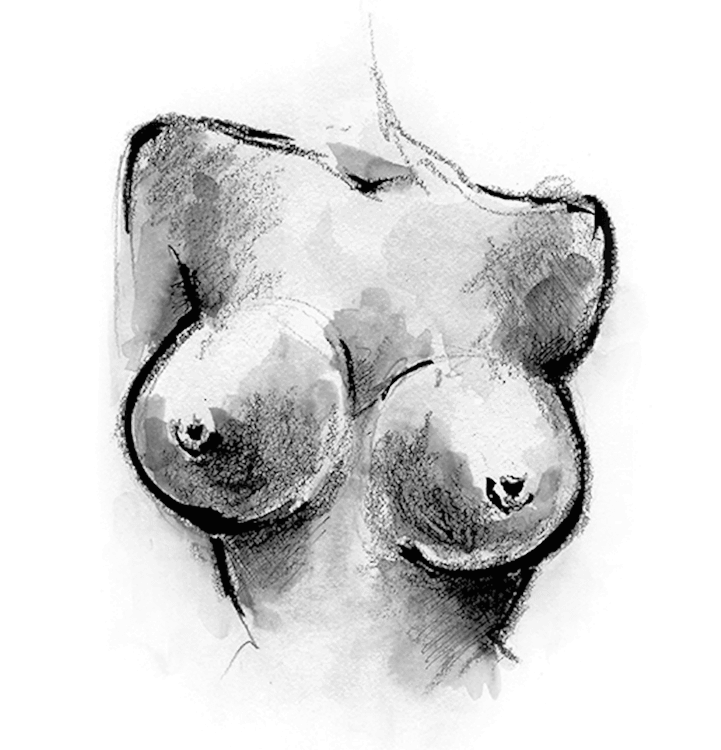Benefits of Enhancement
Restored Volume
Replaces fullness lost after pregnancy or weight loss for a rejuvenated profile.
Perfect Balance
Enhances the hourglass silhouette, balancing broad hips for a harmonious figure.
Symmetry Correction
Corrects noticeable asymmetry using precise implant sizing for each side.
Clothing Fit
Fills out swimwear and clothing beautifully, eliminating the need for padding.
Expected Results
Immediate Volume
Improvement is visible immediately. Swelling subsides within weeks to reveal your new contour.
Natural Feel
Implants settle into a natural position within 3-6 months ("drop and fluff") for a soft, realistic touch.
Symmetrical Harmony
Minor asymmetries are corrected to ensure the chest wall and breast footprint are perfectly balanced.
Patient Experiences
"Dr. Neavin was the best decision I ever made for my breast augmentation. I went from an A to a DD, and they still look completely natural."
— Verified Google Review
"I went from being insecure to feeling ON TOP of the world... He changed my life! Dr. Neavin's artistic eye is unmatched."
— Verified Patient
Implant Options
Silicone Gel
Also known as "Gummy Bear" implants. Filled with a cohesive gel that holds its shape and mimics natural tissue density.
Saline
A silicone shell filled with sterile saltwater after insertion. If a leak occurs, the fluid is safely absorbed by the body.
Head-to-Head Comparison
"Which is best?"
While saline offers peace of mind regarding rupture detection, 95% of our patients choose Silicone (Gummy Bear).
For the "Surgery with Symmetry" philosophy, silicone is superior. It behaves like real breast tissue, minimizes rippling in thin patients, and offers the most natural silhouette possible.
Am I a Candidate?
The Ideal Candidate
- Physical Health: Stable weight and healthy lifestyle.
- Timing: Not currently pregnant or breastfeeding.
- Tissue Quality: Good skin elasticity and adequate tissue coverage.
- Volume Loss: Seeking to restore fullness lost after pregnancy or weight shifts.
- Anatomy: Correcting breast asymmetry or naturally small breasts.
- Goals: Desires natural, proportional enhancement.
- Mindset: Has clear and realistic expectations.
Not Ideal
- ✕ Uncontrolled medical conditions
- ✕ Smoking without willingness to stop
- ✕ Unrealistic or extreme expectations
- ✕ Currently pregnant or breastfeeding
- ✕ Expecting results to solve emotional or relational issues
Investment & Cost Factors
The total investment reflects the quality of care, safety standards, and surgical expertise. Key factors influencing your quote include:
- Implant Selection: Silicone gel implants generally carry a higher material cost than saline options due to their advanced cohesive construction.
- Surgical Complexity: Primary augmentation is straightforward, while revisions or cases requiring a lift (mastopexy) involve more time and technical skill.
- Facility Fees: Use of our fully accredited, private surgical suite ensures privacy, sterility, and advanced safety monitoring.
- Anesthesia: Fees cover a board-certified anesthesiologist dedicated solely to your comfort and safety during the procedure.
Incision Placement
Dr. Neavin selects the approach that best conceals scars while allowing for precise pocket creation.
Inframammary
Hidden in the natural crease (the fold) under the breast. This is the gold standard for visibility, control, and safety.
Periareolar
Placed along the lower border of the areola. The scar blends seamlessly with the natural transition of skin color.
Transaxillary
Located in the armpit fold. This approach leaves the breast completely scar-free, ideal for specific implant types.
Surgery Day Journey
Arrival & Markings
Dr. Neavin creates precise surgical markings on your skin while you are standing.
Anesthesia
General anesthesia ensures you sleep comfortably and safely.
Recovery & Home
You wake up in our recovery room and return home the same day.
Recovery Timeline
Rest & Support Bra
Return to Work
Light Cardio
Final "Drop & Fluff"
Safety & Risks
Breast augmentation is a safe and well-established procedure, especially when performed by an experienced, board-certified plastic surgeon. Like any surgery, however, it carries some potential risks.
Dr. Neavin uses advanced techniques, meticulous planning, and an accredited Beverly Hills surgical suite to minimize complications and support smooth recovery.
During your consultation, Dr. Neavin reviews your medical history and discusses ways to reduce risks through proper preparation and aftercare. His focus on precision, safety, and natural aesthetics helps ensure long-lasting, beautiful results with the highest standard of care.
Potential Considerations
- Swelling, bruising, and temporary discomfort
- Changes in nipple or breast sensation
- Bleeding or infection (rare with proper aftercare)
- Implant rippling or capsular contracture
- Implant rupture or need for future revision surgery
- Asymmetry or dissatisfaction with size/shape

Why Choose Dr. Neavin?
Dr. Tim Neavin combines artistic vision with surgical precision. His philosophy focuses on creating results that are not just enhanced, but perfectly balanced to your unique frame — natural, proportionate, and timeless.
Board-Certified
American Board of Plastic Surgery
Castle Connolly Top Doctor
Recognized for excellence
Artistic Approach
Natural aesthetics specialist
Accredited Facility
Private Beverly Hills suite
Frequently Asked Questions
What is the cost in Beverly Hills?
Will they look "fake"?
Can I breastfeed after surgery?
Start Your Transformation
Schedule your private consultation with Dr. Neavin today.

